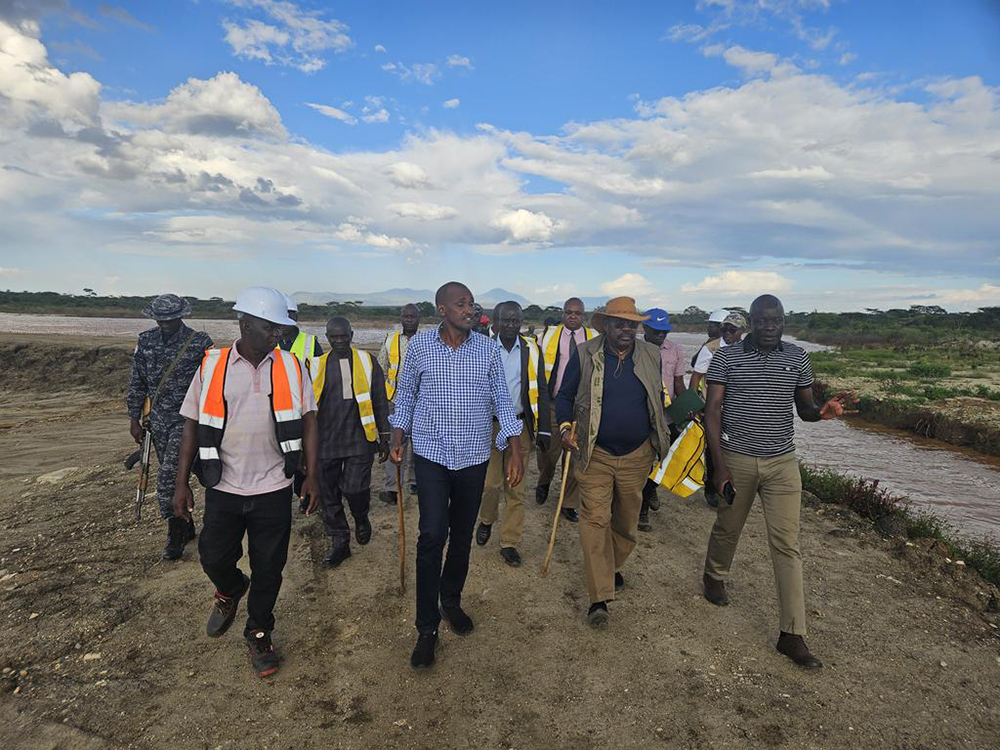Karamoja still struggling to meet food demands, says report
During the report launch, FAO country representative to Uganda, Yergalem Taages Beraki, said Karamoja continues to bear the heaviest burden, with eight of its nine districts in crisis, with Kotido, Kaabong, Napak, and Moroto recording the highest proportions of households struggling to meet their food need
Commissioner Alex Bambona explaining the Government's Position on food insecurity interventions during the food security report launch. (Courtesy)
________________
Although there have been several initiatives to increase food production in Karamoja, the region remains food insecure, according to a report, a copy of which New Vision Online has seen.
The 2025 Integrated Food Security Phase Classification (IPC) report, released on October 29, 2025, prepared by the IPC team in the agriculture ministry, was supported by the Food and Agriculture Organisation (FAO), UNICEF, the World Food Programme and Kyambogo University.
During the report launch, FAO country representative to Uganda, Yergalem Taages Beraki, said Karamoja continues to bear the heaviest burden, with eight of its nine districts in crisis, with Kotido, Kaabong, Napak, and Moroto recording the highest proportions of households struggling to meet their food needs.
Beraki said the IPC results are a reminder of the challenges that Uganda faced between April to July 2025, where an estimated 3.4 million people, about 16% of Uganda’s population, experienced high levels of acute food insecurity.
He called for investment in addressing the root causes of such challenges, including adhering to timely early warning messages and information that can help farmers prepare ahead of time.
“This outlook reinforces the importance of sustained investment, co-ordinated response, and continued vigilance. These figures are not just statistics. They represent real families whose ability to feed themselves depends on collective action, policy commitment, and sustained investment,” Beraki said.
Some participants at the launch. (Courtesy)
What could be the drivers?
According to Beraki, the drivers of the current situation include erratic rainfall, economic pressures and limited access to productive land, all worsened by reduced food assistance and declining income opportunities.
He added that with timely interventions like those from the agriculture ministry, which has established an irrigation facility, and from research through the release of early maturing and drought-tolerant crops for the region, the number of people in Crisis or worse is projected to decline to 2.1 million between August 2025 and February 2026.
He added that working with the Government, FAO has supported the establishment of over 200 infrastructures across the country, introduced multistress-tolerant crop varieties, invested in flood control systems in the Rwenzori region areas prone to floods and in Karamoja, among others.
They have also introduced weather monitoring systems under the anticipatory action Programme to enable district local government authorities to plan and respond early to climatic shocks before they cause havoc.
At the launch at Fairway Hotel in Kampala, agriculture ministry commissioner Alex Bambona, who represented the permanent secretary, emphasised the importance of taking informed actions while addressing food insecurity issues. He pledged that the results and recommendations of the report will be integrated into national planning processes and used to inform decision-making.
Ongoing government interventions

Tumwebaze accompanied by the PS MAAIF, Kasura Kyomukama, also accompanied by some Karamoja leaders touring the irrigation dam. (Courtesy)
Early this month, agriculture minister Frank Tumwebaze, who visited Karamoja, said construction works at Nakonyeni dam in Moroto were at over 80% completion. When completed, the dam will have a capacity of 2million cubic meters of water that will serve livestock, irrigation and also mitigate flooding.